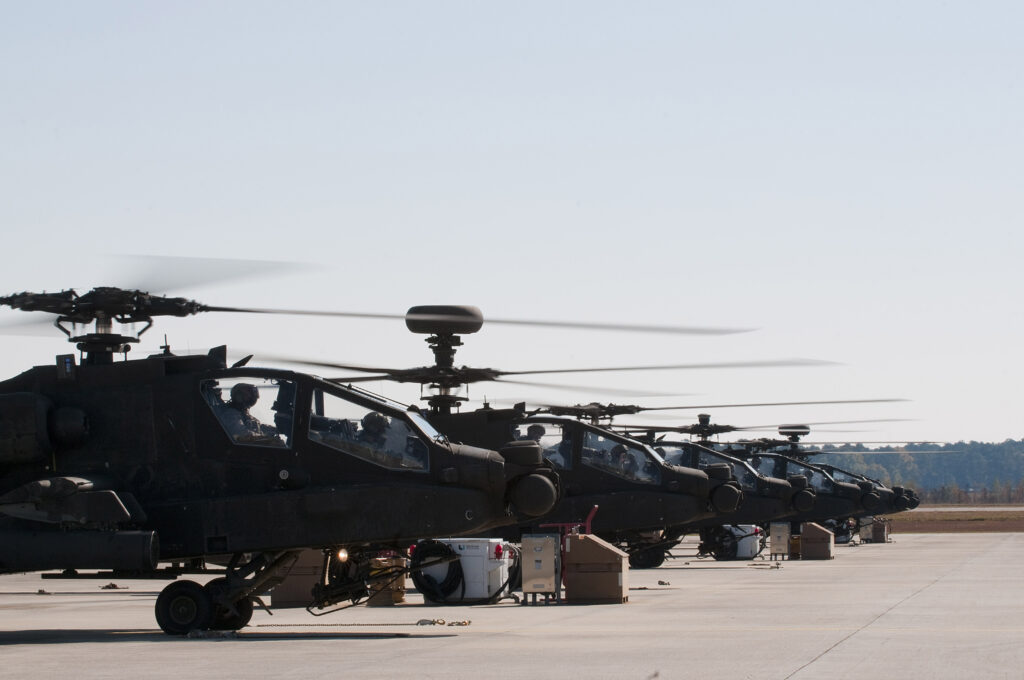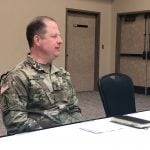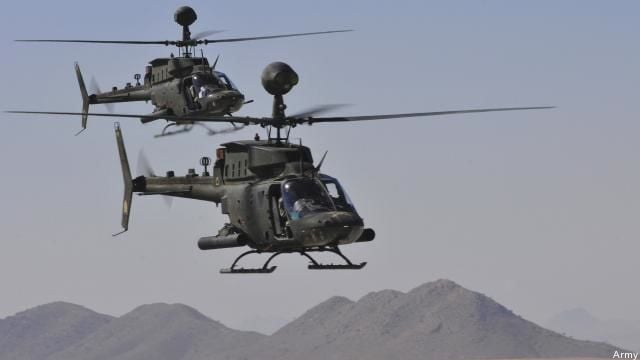Don’t Panic About Apaches: Army Not Junking Gunships
Posted on
HUNTSVILLE: A stray remark to Congress by the Army Chief of Staff has prompted headlines that the proposed Future Attack Reconnaissance Aircraft would replace half of the Army’s AH-64 Apache gunships. That’s technically true, in a very narrow sense, because several hundred Apaches have been pressed into service as scouts — a job they weren’t built for — and the FARA is being designed specifically to take over the scouting mission in a major war with Russia. But that doesn’t mean the Army is getting rid of those Apaches altogether, and it doesn’t mean FARA will take on the much heavier, better-armored Apache’s primary role as a gunship.
The Army’s aviation modernization director, Brig. Gen. Wally Rugen, told reporters here this morning that the service is years from a decision on what to do with the Apaches in recon units once FARA enters service. But while the Army could theoretically just junk the gunships — which would be wasteful — it could also simply transfer them to the kind of attack units they were originally built for. In fact, it’s possible that the gunships could go back to the National Guard attack helicopter units that lost them after a bitter political struggle.
Why did this story blow up? At a Senate hearing Tuesday, Gen. Mark Milley was asked about the Future Armed Reconnaissance Aircraft. The chief of staff replied that “FVL and FARA” would address the need to replace the Apache. Since FVL stands for Future Vertical Lift, a multi-aircraft initiative of which FARA is just one part, Milley’s statement was ambiguous: Would FARA replace Apaches or another aircraft to be developed under the FVL umbrella? But when veteran aviation reporter Steve Trimble asked the Army staff to clarify, he got this:
Official answer by Gen. Milley's spokesman, and it's quite a surprise (at least to me.) pic.twitter.com/xi2HA6gdsT
— Steve Trimble (@TheDEWLine) March 26, 2019
(Yes, the Army has both “Attack Reconnaissance Battalions” and “Heavy Attack Reconnaissance Squadrons,” and they do different things — it would be harder to be more confusing if you tried).
The Army staff’s statement came as “a big surprise,” Trimble tweeted. But it probably shouldn’t have.
From Kiowa to FARA, by way of Ukraine
Understanding this story requires a little history. In 2012, a cash-strapped Army decided to retire the OH-58D Kiowa Warrior, a scout helicopter whose early models saw service in Vietnam and which couldn’t be affordably upgraded any longer. But three attempts to build a new scout chopper had failed (Comanche, Arapaho, and Armed Aerial Scout), so, with Kiowa gone, what would take on the recon role?
The Army’s answer was a mix of Shadow drones and AH-64 gunships — which were taken from attack helicopter units, especially in the National Guard. This Aviation Restructuring Initiative was bitterly controversial and left no one happy. The Guard lost most of its gunships after a long political fight that damaged relationships with the regular Army. Kiowa pilots had to quit flying or retrain on a very different aircraft. Most important, commanders soon learned that the Apache, while vastly better armed and armored than Kiowa, was also much bigger and less agile, making it a mediocre scout, even when supported by the Shadow drone.
Drones will play an ever larger role in reconnaissance in the future, but manned aircraft still matter, because humans have intuition, creativity, and common sense that machines still lack. “The soldier is still the best sensor,” Rugen told reporters at the AUSA Global conference here. “[When] we got rid of the Kiowas… in 2012, that was a very good budgetary decision — but then the Donbas happened in 2014.”
The Army has intently studied Russia’s proxy war/de facto invasion of eastern Ukraine, where Russian drones spotted targets for artillery while Russian anti-aircraft defenses kept Ukrainian aircraft at bay. Army aviators concluded that a war with Russia would require a dedicated light scout, not a repurposed heavy gunship, that could weave nimbly through cities and other dense terrain to reconnoiter the enemy without being shot down.
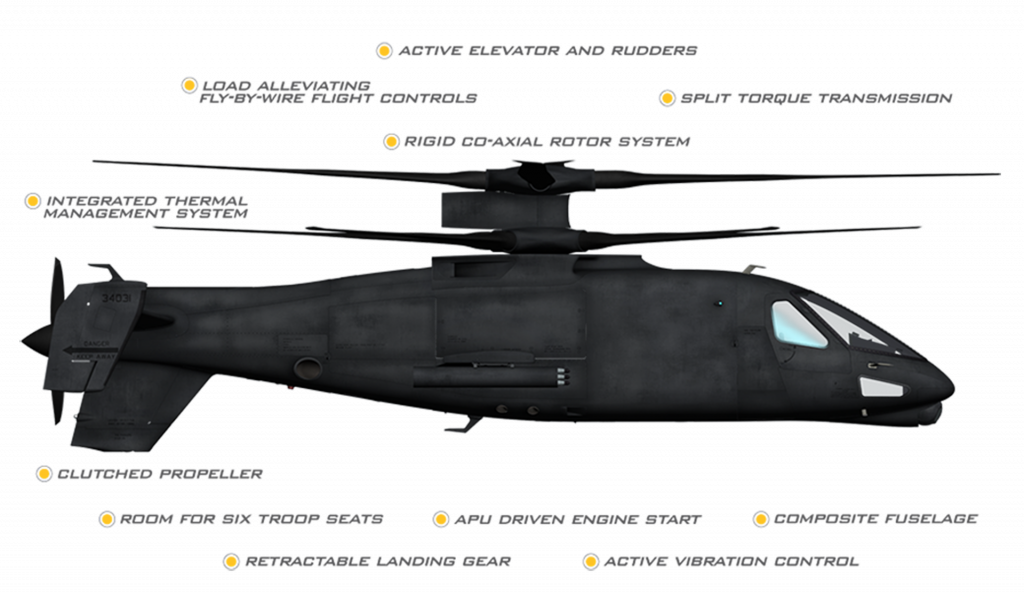
Sikorsky (Lockheed) S-97 Raider design, a leading candidate for the Army’s Future Attack Reconnaissance Aircraft (FARA)
That conclusion led to the rapid rise of FARA, the Future Armed Reconnaissance Aircraft, which went from an unnamed idea to the Army’s most urgent aviation priority within months. FARA would pack cutting edge technology — high speed and long range, advanced electronics and networking with drones — into the traditionally small and agile body of a scout.
So FARA was always intended to take on the Kiowa’s old role in scout units. That always meant it would replace the Apaches in that role, in those units. But depending on how long that takes — and FARA won’t even enter production until the “late ‘20s,” Rugen said — the Apaches it replaces in scout units may have plenty of service life left. At that point, the Army will have a host of options, from retiring Apaches early to save costs, to returning them to the gunship role they were built for and the attack units they were taken from in 2012.
“You want a decision now, but I think we have a long way to go,” a lot of data to gather and analysis to do, Rugen said. “Why would I make a decision before we have to?….We’ve got plenty of time.”
Certainly the Army is very happy with the Apache as a gunship (as opposed to as an ad hoc scout), and there’s no program working on a replacement.
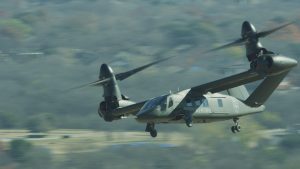
Bell V-280 Valor, a leading candidate for the Future Long-Range Assault Aircraft (FLRAA) to replace the UH-60 Black Hawk.
The Navy, by contrast, is apparently at least looking at a possible new helicopter in the same size class as Apache. That’s what the FVL program calls Capability Set 2, larger than scouts like FARA (CS 1), but smaller than transports like the Black Hawk or its replacement, the Future Long-Range Assault Aircraft (CS 3). Army officials are watching the Navy effort but not focused on it, Rugen said.
“We’ve read their requirements documents and we’ve reviewed it, but noting’s shifted,” Rugen said yesterday. “Our goal is to bring FLRAA and FARA on through Milestone C” — starting production — “by 2028.”
What about a replacement for the Apache? “It wasn’t our greatest need at this point,” Rugen said, especially with the latest upgrade, the AH-64E, just entering service. “It’s a great attack helicopter, the best in the world, but FARA is going to be the greatest armed reconnaissance helicopter.”
Subscribe to our newsletter
Promotions, new products and sales. Directly to your inbox.

